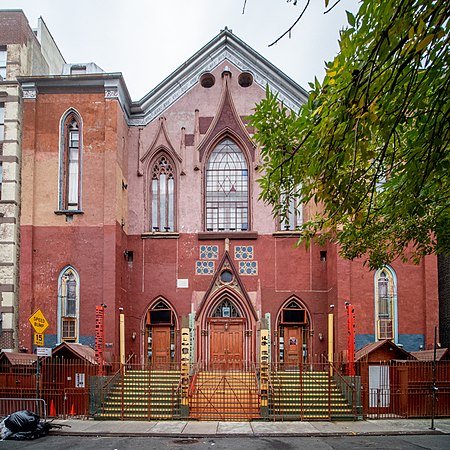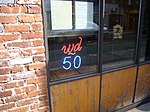The Shul of New York

The Shul of New York is a Jewish liberal non-denominational congregation and synagogue that is located within the Angel Orensanz Center, at 172 Norfolk Street, Lower East Side, Manhattan, New York City, New York, in the United States. The building used by the congregation, the Angel Orensanz Center, was built in 1849, making it the oldest surviving synagogue building in New York City, and the fourth-oldest surviving synagogue building in the United States. It was the largest synagogue in the United States at the time of its construction and is one of the few built in the Gothic Revival style.Since 1849, at various stages, the building has been used as a synagogue, by the Reform Anshe Chesed Congregation (1849–1873), the Orthodox Congregation Shaari Rachmim (1873–1886), the Orthodox First Hungarian Congregation Ohab Zedek (1886–1921), the Orthodox Sheveth Achim Anshe Slonim Synagogue (1921–1974 and then abandoned), and then acquired by the City of New York following vandalization (1981), after which it was sold to a succession of owners: Hungarian Development, Inc. (1983), Seashells, Inc. (1984), and finally Angel Lopez Orensanz (1986).
Excerpt from the Wikipedia article The Shul of New York (License: CC BY-SA 3.0, Authors, Images).The Shul of New York
Norfolk Street, New York Manhattan
Geographical coordinates (GPS) Address Nearby Places Show on map
Geographical coordinates (GPS)
| Latitude | Longitude |
|---|---|
| N 40.721111111111 ° | E -73.985833333333 ° |
Address
Norfolk Street 172
10002 New York, Manhattan
New York, United States
Open on Google Maps









